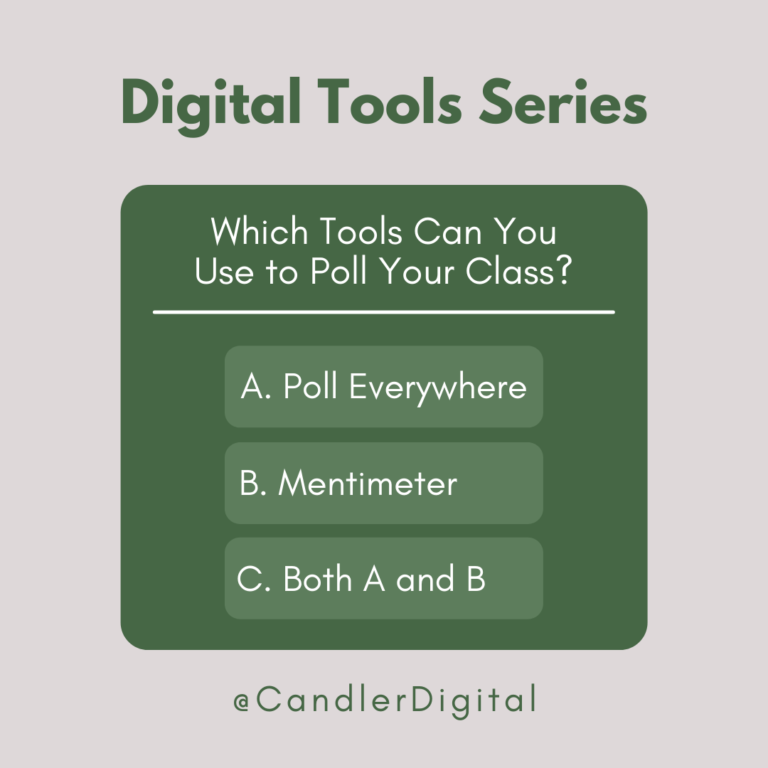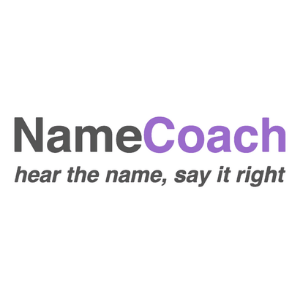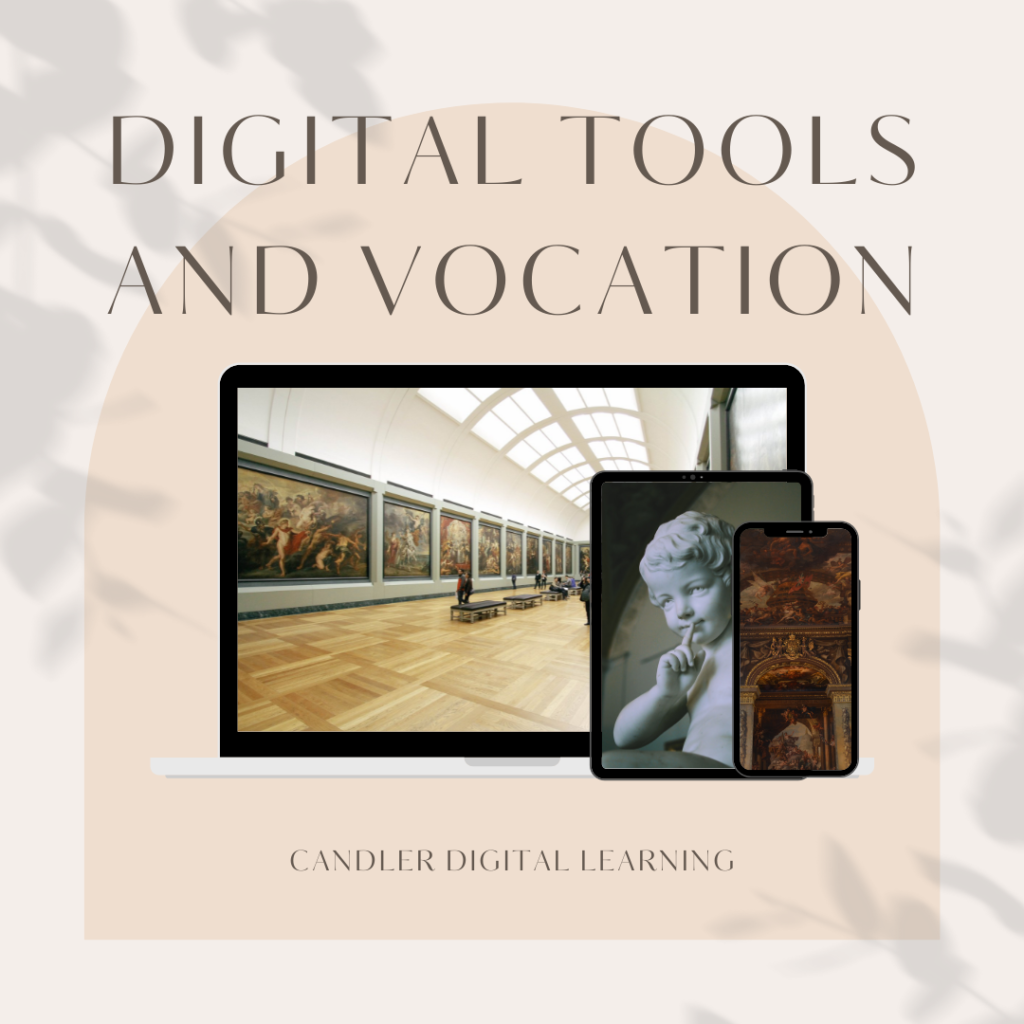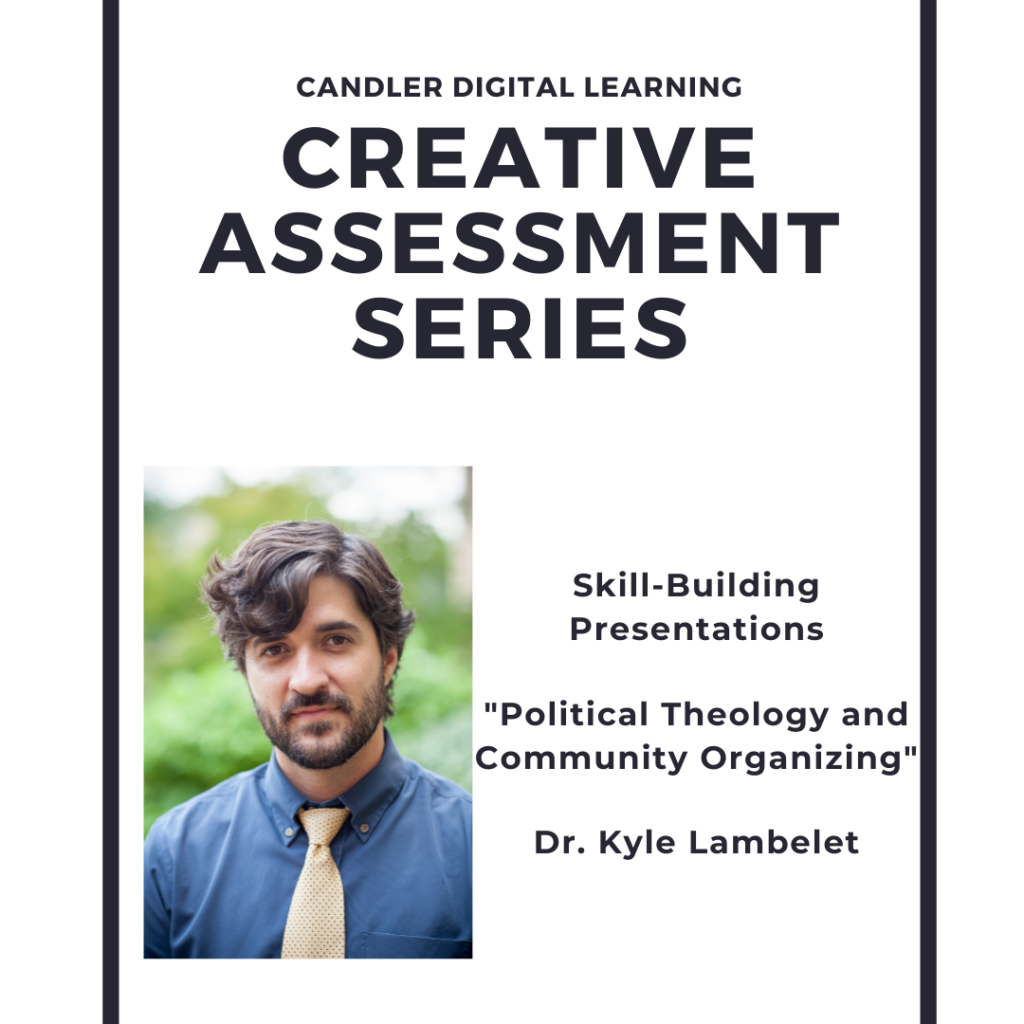If the pandemic has shown us anything about education, it is that learning can often become a passive experience. This is true for both face-to-face and online instruction. Students will get into a “TV watching” mode and not actively engage in discussion.
Now, this is not intentional and it is not something to assign blame. It is just how things are.
Polling tools in the classroom offer brief moments of interaction that require students to think and respond. Not in a high stakes way, but inviting students to a level of engagement that you typically do not see in the Zoom classroom.
This post will cover two tools: Poll Everywhere and Mentimeter and recommend some best practices for using them in the classroom!
Scroll down to watch a Digital Learning Workshop on these tools.

Poll Everywhere
Poll Everywhere is an interactive polling tool with a huge variety of visualized responses. Students respond by clicking on a shared link or by texting in a code.
It is a web-based app that allows for live polls in real-time. Participants can view it online in a web-browser or embedded into powerpoint.
Poll Everywhere is best used synchronously, live in a Zoom room or live during a face-to-face lecture. Anyone with the shared link can participate anonymously and provide answers to questions, input in voting, or just tell you how they are doing!
Best of all, Emory University has an Enterprise-Level Account to Poll Everywhere. Unlimited polls, premium templates, etc. All you need to do is sign in using your Emory email account!

Mentimeter
Mentimeter is an interactive polling tool with multiple question types and visualization options. Students can respond by entering in a unique code at menti.com or using a shared link.
It can be used asynchronously to poll students before or after a class meeting, or synchronously during a live Zoom session.
Anyone with the unique code or shared link can respond to mentimeter polls – no purchase or account creation needed.
Creative Uses for Polling

1. Getting to Know You Games
These are great to use for ice-breakers, first day of class, etc. Ask students their favorite foods, movies. Ask for Netflix recommendations. Ask “what are you reading right now outside of class?”
Students will know that you care about them as people, not just absorbers of knowledge AND you just might get some great recommendations along the way!
2. Knowledge Checks
Knowledge checks can be a great asset to your class as you can ask students to write down one or two elements they gleaned from your lecture or the class discussion.
You can use polling tools for open-ended responses. Giving students time in class to reflect on what they have learned or to potentially ask further questions is so important for checking in with students and making sure what you want them to know is getting through.
3. Temperature Checks
Sometimes, you as a faculty need to do a check-in. See how your students are doing? See if they need anything? What is great about these polling tools is that they have the option of being completely anonymous.
Check on your students and encourage them to be truly honest in their responses. For instance, use this prompt with an open-ended template: “How are you doing, really?” Use this as an opportunity to invite persons with specific answers to contact you after class if they want to. This removes the pressure and creates an environment of care in your classroom.
4. General Engagement
For general and creative engagement, think about how to get students directly engaged in lectures. Invite them to answer questions on whether or not they agree with an argument from the author of the reading being discussed. Then, ask for a few of those on each side to explain why they agree or disagree.
Tools for Engagement Digital Learning Workshop
The following video is our workshop titled “Tools for Engagement.” In this video, we cover both Poll Everywhere and Mentimeter as well as some exciting applications of these tools!




